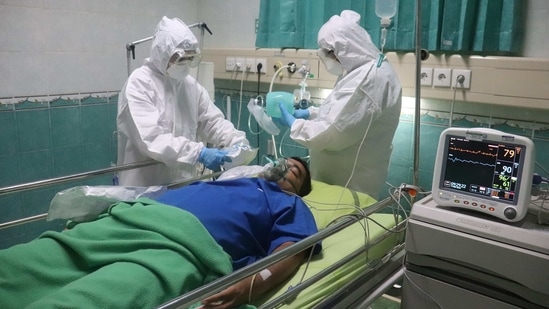
A new study has found that covid-19 patients who suffer a heart attack have a higher probability compared to those who are not infected with it. Women in particular have a higher chance of dying nine times for the same reason.
According to research published in the European Heart Journal, the Swedish study included 1946 people who suffered an out-of-hospital heart attack (OHCA) and 1080 one suffered in-hospital (IHCA) between 1 January and 20 July. During the pandemic phase of the study, Covid-19 was involved in at least 10 percent of all OHCAs and 16 percent of IHCAs.
Coronavirus patients with OHCA had a 3.4-fold increased risk of death within 30 days, while IHCA patients had a higher risk of death within 30 days. None of these patients had been discharged from the hospital before the study was written in October 2020. Many had died and the rest were still receiving hospital treatment.
The first author of the study, Dr. Pedram Sultanian, a doctoral student at the University of Gothenburg (Sweden), said, “Our study clearly shows that heart attack and Covid-19 are a very lethal combination. Patients with coronavirus should be closely monitored and steps taken to prevent heart attack, for example through the use of continuous heart checkers for high – risk patients. “
This is the first detailed report of features and outcomes in Covid-19 patients suffering from heart attack. The researchers analyzed data from the Swedish Cardiopulmonary Resuscitation Register (SRCR), which is a national record that began collecting data on Covid-19 from 1 April 2020 onwards. The researchers included all heart attacks recorded in the SRCR from 1 January to 20 July 2020 and divided them into a pre-pandemic group (before 16 March) and a pandemic group (16 March to 20 July).
They found that 7.6 percent of pre-pandemic patients were still alive 30 days after undergoing OHCA. As soon as the pandemic began, 9.8 percent of patients survived without Covid-19 and 4.7 percent with Covid-19 for 30 days; 83.4 percent of Covid-19 patients died within 24 hours.
Pre-pandemic, 36.4 percent of IHCA patients survived for 30 days, but once the pandemic began 39.5 percent of non-Covid-19 patients and 23.1 percent of patients Covid-19 which survived for 30 days; 60.5 percent of Covid-19 patients died within 24 hours.
The slightly better survival rate for unprotected patients undergoing OHCA and IHCA during the pandemic is not statistically significant, but the researchers believe that if there is a real improvement, it could this is partly explained by the 8.2 percent increase in heart attack seen by witnesses and the 47 percent increase in survivors using defibrillators.
When they compared pre-pandemic cases with Covid-19 cases, the researchers found that the overall risk of dying after OHCA was almost three times; it was increased 4.5-fold for men and by a third for women. The overall risk of dying after IHCA has more than doubled; it was increased by half in men and more than nine times in women.
The researchers also found a 2.7-fold increase in the proportion of OHCA that caused respiratory problems and an 8.6 percent increase in tension cardiopulmonary resuscitation (CPR) alone during the pandemic. The percentage of people treated with both chest tightness as well as oral resuscitation fell from 33 percent pre-pandemic to 23 percent during the pandemic.
In March the European Recovery Council and the Swedish Recovery Council issued guidelines recommending that people experiencing a heart attack should avoid oral resuscitation. -eral and targeting of chest compressions if Covid-19 infection is suspected.
The study’s lead author, Dr. Araz Rawshani, a physician and researcher at the University of Gothenburg, said, “Although previous studies have shown that only CPR of tensile CPR delivered by sedatives can be as effective as tension and ventilation collectively, this may not apply to issues with Covid-19, as they suffer from respiratory failure.We believe this is an important finding that may help As Covid-19 is transmitted by droplets, survivors should avoid oral resuscitation in line with standard recommendations. there is no unanimous response on how society and health care providers should adapt to this issue. “
He said, “The study also shows that fewer patients were hospitalized with Covid-19 screened with electrocardiograms, which can be life-saving because it allows for heart attack to be seen in the We believe that Covid-19 patients should be monitored and monitored for oxygen absorption, as this would allow the immediate identification of irregular heartbeats and a reduction in oxygen absorption. “
The limitations of the study include that Stockholm county, where the majority of coronavirus cases occurred, did not include data on OHCAs at the time of the study and this reduced the number of Covid-19 patients in the study. ; and some cases of Covid-19 may have been misdiagnosed, particularly for out-of-hospital cardiac arrest.
Follow more stories on it Facebook and Twitter
This story was published from a wire group group with no text changes.


